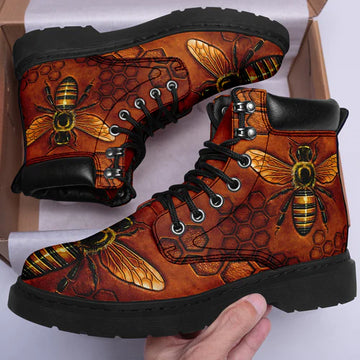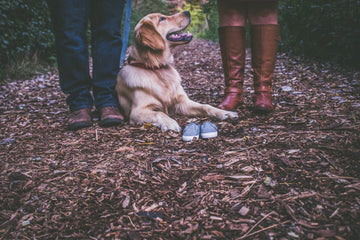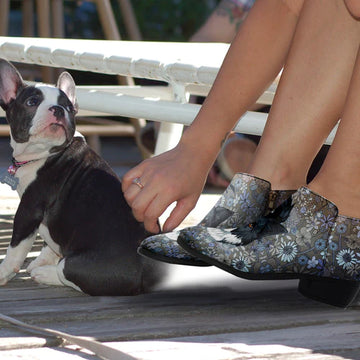Foot exercises: Solve the problems of foot pain, tight ankles, and calves
by LLxx on Mar 08, 2024

Foot exercises: Solve the problems of foot pain, tight ankles, and calves
Without feet, we cannot stand, walk, run, or chase children all over the house. Our feet and ankles are very important. Unfortunately, unless something goes wrong, our lower limbs are often ignored.
If your feet, ankles, or calves are painful or restricted, this article provides you with all the exercises you need to overcome the limitations in this area. It is derived from the latest practice in the front line and has helped thousands of people who have suffered countless foot and/or ankle pains through these exercises and regular exercises to bring them back to life and the game.
Let’s get started!
The leg bone is connected to the heel bone (there is another bone in the middle)
Let’s take a look at the basic anatomy in order to understand the condition of the feet, ankles, and/or calves. (A brief overview of the clinic, does not involve surgery or any other operations.)
The lower leg is made up of the tibia, which is larger on the inside, and the fibula, which is smaller on the outside, which connects down to the talus and calcareous (heel), and then to the five small bones of the instep and the metatarsals and phalanges (your toes).

Many different sizes of ligaments connect the bones together, in order to maintain stability, as well as from each leg to the little toe kind of muscle.
The ankle and foot can be moved at various angles to provide stability and dexterity, allowing us to use it on all types of terrain from soft sand to rocky ground. The ankle is actually not like the hinge on the door, and our foot is not just the one in the socks.
All the large and small joints in the area can play this agility together, but the premise is that we must let them move as expected!
Leg muscles net network such as how to work together
Our calf (gastrocnemius large and deep gastrocnemius and soleus small SOLEUS) the toes downward, so that we have the ability to help lift the toes and running and jumping. In fact, even if the feet are flat on the ground, our calves can maintain squatting, lunges, and other big movements.

The anterior and posterior sides of the tibia are the tibialis anterior, tibial posterior, and peroneal muscles. They have stability. This fine motor control can keep us balanced and stable.
Down to the foot are the many small muscles that control the arch and toes. When we do not often take off our shoes and move our feet, the muscles in these feet are most likely to atrophy due to not being used.
All these muscles-what could go wrong?
Taking all these factors into consideration, it is easy to see the complexity of keeping us upright and walking, as well as running, jumping, and balance due to the combined action of large and small muscles and joints.

The coordination and difference of all these movements are the keys to controlling the feet and ankles and moving freely and gracefully through the feet.
The two most common problems in this field are:
Stiff feet and ankles — If the smaller muscles are too weak to support the feet and ankles, the body will respond by increasing tension when possible: in the larger muscles. This can cause tightness in the calves and ankles. Stretching will help, and improving the control and strength of the foot is the solution.
Foot arch collapse -This may be due to poor mobility of the midfoot and weak posterior tibia and internal muscles. As the mobility and strength of these areas increase, the arch of the foot can self-correct over time.
Below, we will discuss various exercises that focus on coordination and agility to wake up the dormant muscles and restore proper movement and control of this important part.
8 Foot exercises to create healthy feet and ankles
The exercises we show here focus on active movements in various angles and ranges of motion.
Many people do not fully explore the exercises that feet and ankles can perform, and this leads to stiffness and weakness. The first step is to know that this exercise mode can actually be used. The next and best step is to keep practicing!
Let’s take a look at these exercises in detail.
- Foot Circles with Toes Flexed (Curled)

Keep your toes gently bent (not too tight, or your feet may cramp).
Slowly and controlled circle the circle in one direction, then switch directions.
You may need to take a break between Dong repetitions to prevent cramps.
Do 10–15 repetitions of 2–3 sets in each direction.
2. Movement coordination

Here, the toes and feet are controlled through the ankle.
Curl your toes when you hook your feet, then stretch your toes when you bend your feet.
Then, reverse these actions. Extend your toes when hooking your feet, and then bend your toes when you pull your feet back.
Perform 2 sets of 10 repetitions for the two variants.
3. Diagonal pattern

Through this exercise, focus on the diagonal movement of the foot and ankle.
Draw an “X” with your foot and move it down from the outer/upper corner to the inner/lower corner, and then from the inner/upper corner to the outer/lower corner.
Practice on the ground or sit in a chair first. When you feel more comfortable, you can try this operation while standing.
Do 10–20 repetitions for 2–3 sets.
4. Rolling Up Onto the Toes

Whether you are squatting completely as shown in the picture, or standing in a lunge, or supporting something with your hands, you can start in any posture that suits you. One foot is in the front and the other foot is in the back.
Roll forward so you can stand on the toes of your front feet. Go forward as far as possible.
Adjust the position and make sure that it can be operated on both sides.
Do 5–8 times and repeat 3 sets of exercises.
5. Squat and ankle rotation

The main action of this exercise is to roll the ankle in and out.
You can do this from a squatting position, or you can sit on a stool or chair to do this, and find the method that suits you best.
Do 5–8 times and repeat 3 sets.
6. Roll left and right ankles

This sport emphasizes strengthening the abnormal position of the ankle while carrying weight. By doing this while standing, your ankle will bear some weight (but only a comfortable weight).
Lift the toe of one foot, and then move the weight on the toe left and right. Repeat on the other foot.
Do 5–8 times and repeat 3 sets of exercises.
7. Weight-bearing ankle circle

This variant of action can lift the toes off the ground so that the foot is on the heel. Likewise, stay standing to allow the ankle to bear weight, but you can adjust how much weight to achieve a comfortable level.
Rotate the ankle in one direction and then in the opposite direction. Repeat on the other side.
Then, do the same exercise, but this time, lift the soles of the feet and perform the ankle loop exercise when the heels are off the ground.
Do 10 repetitions in each direction for 2 sets.
8. Raise the calf

For this exercise, the leg is raised on a stool or step, or it can be raised on the ground.
If you are going to step on a step, lower one or both of your heels towards the ground until you feel that your calves are well stretched. Then, press the sole of the foot to lift the heel. Do this slowly and in a controlled manner.
From the ground, focus only on raising the heels, then slowly lowering.
Both curved legs and straight legs can be tried.
Repeat 8 to 12 times, 3 sets.
Calf and ankle stretching exercises are important A common complaint we hear from other friends is the lack of ankle flexibility, which hinders many exercises, including pistol squats and various movement modes.
The calf muscles are very dense muscle groups because we often use them-also when standing and walking. And because of the lack of various exercises throughout the day, the ankle joint is often stiff. This may require active stretching in terms of load rather than strength to achieve improved joint mobility.

Keep your feet healthy for life
Our ankles and feet are often under-exercised, and our daily dependence on the feet and ankles is taken for granted. Ignoring all the movements of the feet and the ability to coordinate movements can lead to stiffness and weakness, and even pain.
This article focuses on simple and effective exercises that reduce the chance of potential injury and can also reverse some of the injuries that have been caused (unless surgery or more in-depth treatment is required to repair the real injury).





